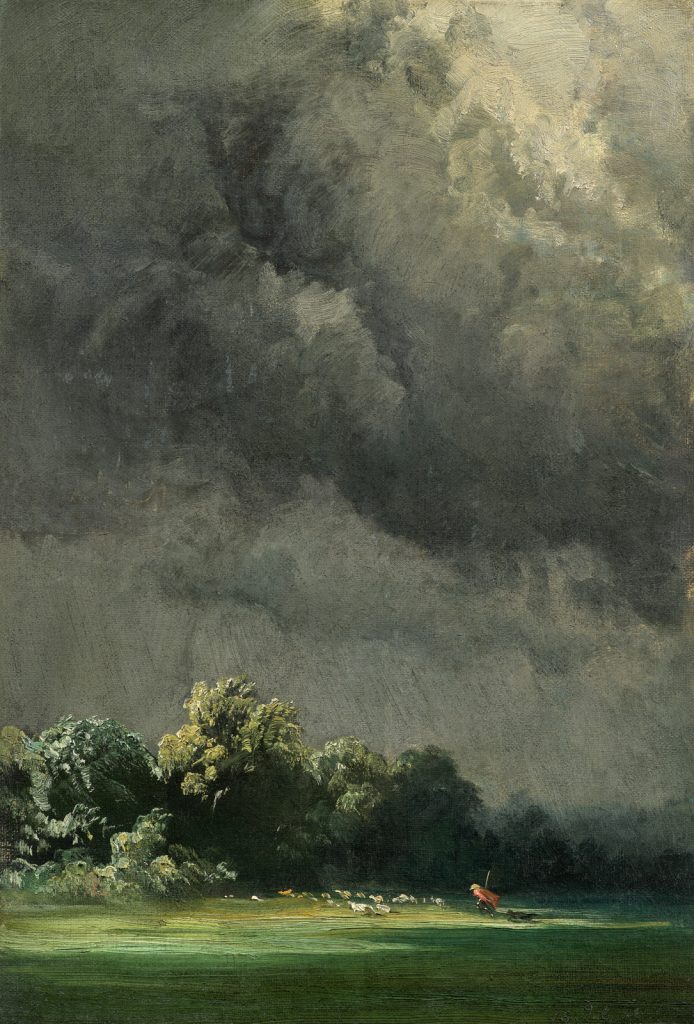Robert Zünd
(1827 - Lucerne, Switzerland - 1909)
Storm-Ridden Landscape, 1854
Oil on canvas, 40 x 27.5 cm
Dated lower right 18 July 54
Provenance:
Asbjørn Lunde (1927-2017), New York, from 2000, inv. 238.
Exhibited:
Den ville natur. Sveitisk og norsk romantikk. Malerier fra Asbjørn Lundes samling, Tromsø, Nordnorsk Kunstmuseum and Bergen Billedgalleri, 2007, pp. 98-9, no. 26;
Alpine Views: Alexandre Calame and the Swiss Landscape, Williamstown, Sterling and Francine Clark Art Institute, 2006, no. 33;
Alpine Views. Alexandre Calame and the Swiss Landscape, Storrs, The William Benton Museum of Art, University of Connecticut, 2007;
Forests, Rocks, Torrents: Norwegian and Swiss Landscapes from the Lunde Collection, London, National Gallery, 2011, no. 51;
Rocks & Rivers: Masterpieces of Landscape Painting from the Lunde Collection, Edinburgh, Scottish National Gallery of Modern Art, on loan in 2015-17.
The date 18 July 54, incised directly into the wet paint, suggests that this oil study was completed in the course of a single day. The precise topographical location remains unclear; however it is likely that Zünd chose a viewpoint in the countryside near Lucerne. He held a lifelong attachment to the area and rarely left it after 1853. The vibrant overall impact of the study owes much to the immediacy characteristic of plein-air painting. It vividly documents the dramatic mood of an approaching summer storm. Rays of sunlight break through the looming darkness of the storm clouds and immerse the shepherd and his flock in dramatic light.
The primary focus of attention is on the vast expanse of leaden sky that fills two-thirds of the image. The juxtaposition of the red of the shepherd’s cloak with its complementary, the vivid green of the meadow, heightens the intensity of the scene. The diminutive forms of the man and his animals as they race for shelter convey the powerlessness of living creatures in the face of an impending storm.
From the 1850s onwards, Zünd intensified his study of the ambience of natural light. He was committed to achieving new methods of representing it in his painting. His fascination for light was triggered by a first visit to Paris in 1852, where he came into contact with the painters of the Barbizon school and was introduced to the techniques of plein-air painting.1
1 See Hermann Uhde-Bernays, Robert Zünd, Basel 1926, p. 19.

